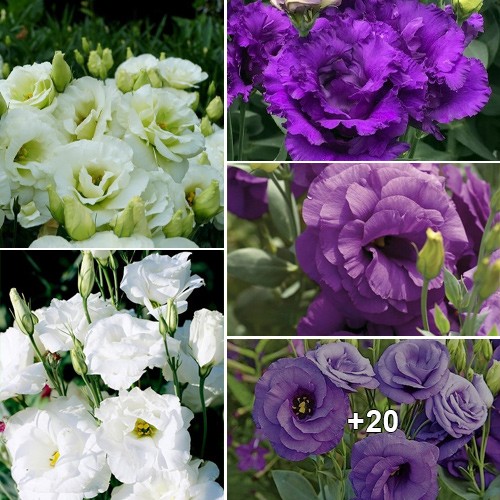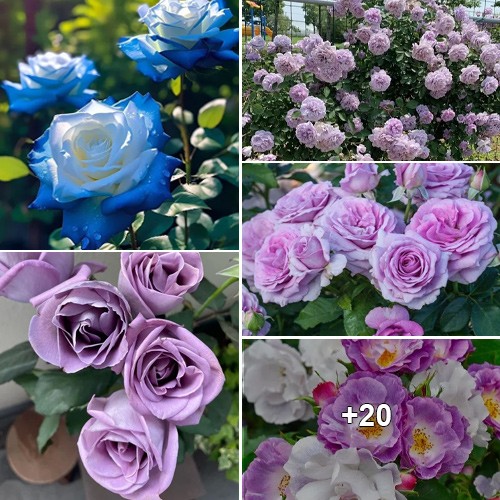
Gerbera daisies can be propagated either through seedlings or root division. If you have a mature and healthy plant, you can double the number of plants by dividing its roots in two. Alternatively, if you do not have an established plant yet, you may grow new ones from seeds. To do so, sow the seeds in individual pots or seed trays at a depth of about 1/4 inch. Once the seedlings have grown two true leaves, transfer them to a larger pot or plot.

Growing gerbera daisy seeds has many advantages, such as the ability to choose your preferred variety and a cost-effective way to add multiple plants to your garden. However, if you don’t plan on growing them in large quantities, it may be easier to purchase healthy individual gerbera daisy transplants from a reputable garden center. Here’s a list of lovely flowers that start with the letter ‘G’.

For optimal results, it is important to select an appropriate pot size for Gerera daisies. The ideal size will vary depending on the cultivar, but most plants typically grow to be between 6 to 18 inches tall. As a general rule, it is recommended to use pots that are at least 6-10 inches deep and broad to accommodate these sizes. However, it is important to avoid using a pot that is too large, as these plants tend to prefer having slightly constricted roots.

Discover the most beautiful flower breeds that share an uncanny resemblance to Daisies in the list below. Also, find out how to properly care for indoor Gerbera Daisies.

Good lighting is important for Gereras to grow properly. So, it’s a good idea to put your plant in a place that gets enough sunlight. Choose a sunny spot inside, preferably facing south or west, with lots of natural light coming in through the window.

When the summertime sizzles and the mercury hits 100 F (38 C), make sure to protect your plant from the blazing afternoon sun. In those dreary winter months, when the sun is weak and daylight is scarce, artificial lighting can come to the rescue and keep Gerera alive and kicking.

Having sufficient drainage is crucial when it comes to growing Gerbera daisies. Keeping them in soil that is constantly wet or moist can lead to various diseases such as root rot, powdery mildew, and crown rot. To prevent this, make sure to provide proper drainage holes at the base of the pot.

Opting for a receptacle that has drainage would be the better choice, but in case you’re making your own planter, drilling holes on it is an option. As for the soil, it’s best to use a sandy and lightweight potting mix that’s crumbly in texture, free from compaction and hard soil. Additionally, incorporating organic matter into it can help with drainage.

To ensure the growth of Gerbera daisies, it is crucial to maintain a slightly moist soil environment, particularly when growing them outdoors. However, when grown indoors, watering should be done with extra care. It is best to water the plant only when the soil is dry, while being mindful of avoiding waterlogging that may wet the leaves. Overwatering the plant frequently can result in root rot, so it is essential to exercise caution.

NourishingProviding your plants with proper nourishment during the blooming season can be achieved by using either a looming or balanced fertilizer, which will help them thrive.

You can start feeding your plant in spring all the way to early or mid-fall. The package that the plant came in should have instructions on feeding, so make sure to read and follow them.

To ensure that your plant stays healthy, it’s recommended to feed it every 2-3 weeks with a fertilizer at half the strength suggested by the manufacturer. Even during winter in frost-free areas, do not stop fertilizing. Be cautious of using fertilizers with low or no phosphorus as this may result in slower growth and substandard plants. To gain more knowledge on this topic, kindly refer to the article provided. If you’re interested in discovering the most stunning violet flowers, check out this article.

Trimming off wilted flowers is an essential aspect of taking care of Gerbera Daisies, known as deadheading. This technique involves cutting or pinching the stem at the base of the faded flower using a sharp knife or your fingers.

Instead of wasting energy on dying looms, it will now be utilized for the development of new looms and growth. The instruction also prevents plants from producing seeds while still producing blooms.

Wilting flowers not only look unattractive but also attract bugs. For some amazing orange food options, take a look here. Let’s discuss how to repot Gerbera Daisies.

To ensure your Gerera Daisy stays healthy, it’s important to keep track of its re-potting schedule and follow the recommended care instructions. When you notice that your plant has outgrown its current pot, it’s time to transplant it into a new one. Look for a pot that is about 2-3 inches bigger in diameter than the old one and has enough drainage holes at the bottom.
Before placing the plant in the new pot, provide a three-inch-thick layer of potting mix and make sure the roots are below the surface of the soil. It’s also important to remove any decaying or diseased roots and loosen up the soil around the roots before re-potting.
For those looking to add some pink flower bushes to their outdoor space, be sure to check out the best options available. And remember, with proper maintenance, your Gerera Daisy is sure to thrive!

When it comes to the location of this plant, it’s important to note that while it thrives in morning sunlight, too much exposure to scorching afternoon light can be harmful. This is especially true in the midst of blazing summer temperatures, so be sure to protect yourself from the sun during mid-day hours. The Florida University Extension also recommends taking these precautions. As for planting, it’s essential to wait until the threat of freezing weather or frost has passed before placing the Gerera outside. When you do plant it, make sure to place it in a trench that is 6-8 inches deep, taking care to maintain the same planting depth as when it was in its original container. Credit for the image goes to Pinterest, and this information comes from Garden Lover.





